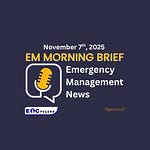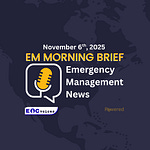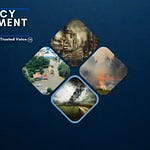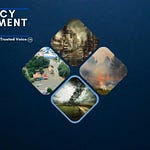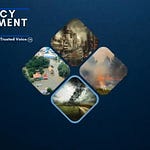Know when to have a meeting
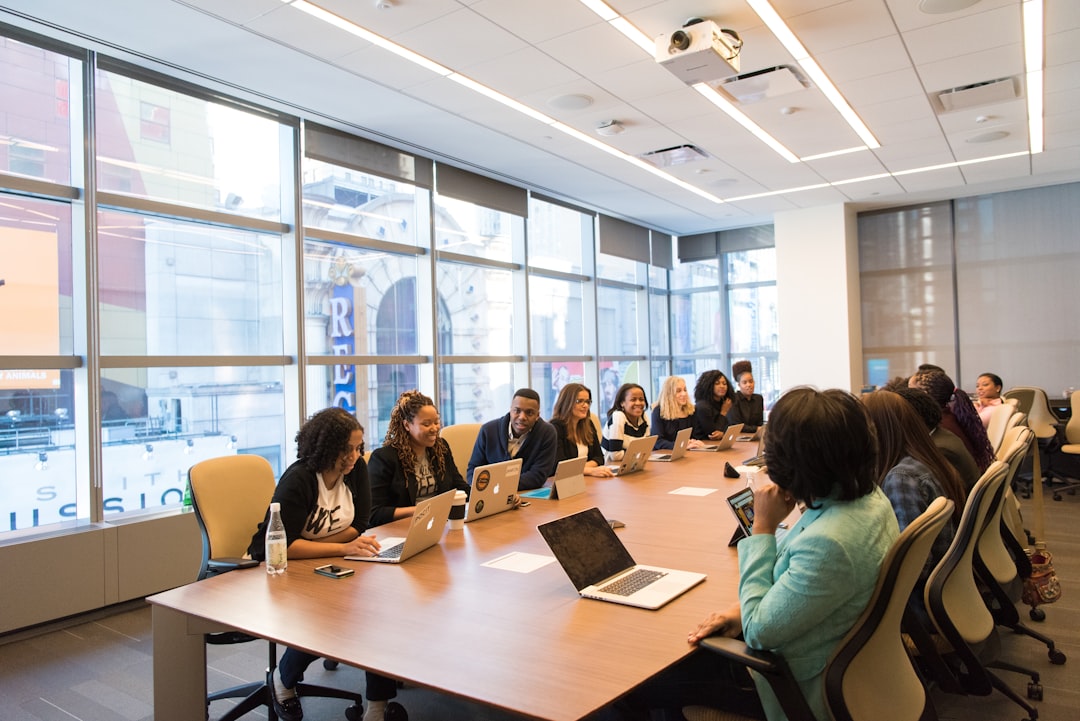
One of the things that we are known for in Emergency Management is meetings. I believe meetings are overrated. I have to admit that I have been known to call and chair my fair share of meetings. So I am not throwing rocks in a glass house.
Part of the reason I am posting this piece is to remind my team and me to keep all of us accountable to each other when it comes to our meetings.
When we talk about meetings, I am not talking about the simple one-on-ones or briefings we often conduct. I am talking about meetings that involve several people. These types of meetings tend to be unproductive and time suckers. In general, we call meetings for a variety of reasons. However, Decision-making is not one of them. And Getting feedback on a subject can be done in other, more efficient ways.
So let's set some guidelines for meetings. The first guideline is when in doubt, do not call a meeting. Question every meeting you have on your calendar, are you having the meeting just for the sake of it? If the answer to that question is yes, then cancel that meeting.
What is the Reason for the Meeting?
If you are working on a project, such as an Emergency Operations Plan (EOP), and you need to give or receive updates to the team, then a meeting may be a practical use of time. Meetings come at a cost, and consider that when calling for one. Think of time as money; you need to spend people's time wisely. Consider the time required to plan for the meeting, the agenda you need to make, and what projects team members are working on. That doesn't even include the lost productivity during an actual meeting. Many people have different agendas, views, and concerns when a group is in a meeting and are they in the right mindset to meet?
In some cases, these differences create quality conversations. In other ways, they cost the team extra time and harm productivity. You need to manage that conversation. And managing a conversation is lost productivity.
Five Reasons to Call a Meeting
As we have better and more efficient communication methods, the trend is to move away from in-person meetings (or Zoom). We need to be more thoughtful about when we call for meetings. Here are the five justifications for requesting a meeting. First, ask for a meeting when you must make significant or essential decisions that impact the organization. In that case, the face-to-face forum allows you to have the discussion you need. Face-to-face meetings are critical if the team expects to have a voice in the decision.
Next, use meetings to make significant announcements. When impactful events, announcing strategic directives, or unexpected changes have occurred, consistency in message delivery is vital. For example, maybe the organization has decided to acquire another organization, or perhaps crucial government regulations just changed that will affect the team. Delivering messages uniformly to everyone at a meeting can be very useful.
Another good reason for a meeting is the kick-off meeting. As emergency managers, we need to lead that meeting for new or large-scale projects; a kick-off meeting provides many benefits. These include fully explaining the new initiative, ensuring stakeholder role clarity, and setting goals and expectations concerning performance for the new project. A kick-off meeting also allows stakeholders to ask questions, allowing you to establish a two-way dialogue to ensure that everyone is on the same page.
Another great reason to have a meeting is called a premortem. A premortem is a meeting designed to imagine everything that might go wrong once the project goes live. It's a type of planning meeting that should identify a small number of issues that might become challenges or obstacles while working on the project. It's a great time to proactively and preemptively decide on a strategy for dealing with these predictable bumps in the road. In contrast to a premortem is the postmortem.
Following the completion of any considerable effort, it is helpful to call a meeting to gain closure and to ensure learning is captured in a way that benefits future projects. Think through the problems solved, the solutions used, the resources employed, and any new contacts the group made. Capture all of that information so that later, the team doesn't have to reinvent the wheel when facing similar challenges.
The postmortem is also a great time to say thanks and recognize achievements. Meetings can be helpful but often aren't if you're facing one of the situations we've just discussed; great! Call a meeting. Otherwise, resist the urge and instead rely on individuals or subgroups of individuals as a more efficient means of getting the work done. If you do, you'll have fewer but more productive meetings.
Deciding who should attend a meeting
What makes the most efficient meeting? How many people should be there to maximize productivity? There is no correct answer. As my friend would say, Invite the smallest amount of people required to get the job done. Remember, adding people to a recurring meeting when necessary is easy. Removing people is next to impossible. Also, it is wise to try to minimize the hierarchy levels in any meeting: the fewer brass in the room, the better the conversation. And I know this, I am now one of the brass, and I can kill a good working conversation.
If you have any doubts about inviting an individual to a meeting, don't invite them. You should only ask one of the three main types of people to a meeting: 1) the experts, 2)the affected, and 3) the stakeholders.
The expert has detailed knowledge and relevant talent related to the topic at hand. The experts provide the fine-grained expertise and the in-the-trenches operational knowledge required for success.
Next, we have the affected. Which individuals or groups will be forced to live with the decisions made at this meeting? They are concerned, and they often make outstanding meeting participants. Having them present helps lay the groundwork for the future implementation of any decisions made during the meeting.
We must also consider the stakeholders. This higher-level person openly supports the project and the team's work. The more critical the project, the more you must clarify who the stakeholders are. Though they only need to attend meetings occasionally, a few appearances will make their presence felt and signal substantial support.
Thus, everyone involved will understand the importance of the work. Unfortunately, as opposed to only inviting the people we just discussed, people in charge of meetings often request many people who do not need to attend.
Let's be clear; there are at least three types of people you want to avoid inviting. Don't ask too many experts beyond the number you honestly believe are required. If you have 20 engineers with the needed knowledge, you don't need to invite all of them. Recall that your goal is to ask the fewest people required.
Also, please don't feel compelled to invite someone merely because they have been associated with the topic. Many people think that asking someone like that is a type of courtesy. No! Unless they are the expert or sponsor you to need, don't allow your meeting overhead to grow by inviting non-essential personnel. Finally, and this is a big one, you don't want to invite people you feel are necessary only for political reasons. A political appointee at a meeting is someone you think you should invite because if you don't, you think some other leader might feel shunned or annoyed.
Anytime someone is at the meeting, and people wonder why or perceive it as political, the conversations will be stale, and the meeting will be unproductive. Nothing will ruin a tremendous collaborative discussion in a meeting faster than the presence of a spy. Meetings don't have to be bloated and unproductive, not if you focus clearly on inviting only the right people. That's the experts, the affected, and the sponsors.
Effective meeting rules
Productive meetings are more than knowing when to call a meeting and inviting the proper participants; meetings are helpful with a clear plan and decent facilitation skills. Every great meeting operates within specific parameters defined by a few thoughtful, mutually agreed-upon rules. After initial social interaction ceases and the session begins, it's helpful to note any relevant meeting rules briefly.
When setting meeting rules, there are several common ideas for you to consider.
First, make rule number one: all members must arrive on time and prepared. Meetings have a palpable and emotional mood. Nothing spoils the atmosphere in a meeting quicker than participants who show up late and unprepared.
Next, clarify the meeting boundaries. Start by highlighting the goal of the meeting and establish the scope of what the conversation will be. This rule reduces meeting Creep. Meeting Creep is the unintended and unexpected shifting of direction into topics not central to the purpose of the meeting.
It is also valuable to note relevant, acceptable and unacceptable behaviors during the meeting. Aside from showing up on time and prepared, there are several typical examples. Be critical but also optimistic to avoid interrupting others or unnecessary use of electronic devices during the meeting. One of the most important meeting rules involves decision-making. Specifically, the group will benefit from agreed-upon rules for making decisions. First, let's mention what not to do. Don't overuse simple voting techniques.
Voting always has winners and losers. Instead, consider this approach. The single most important method is to strive for consensus through discussion. Sometimes, however, an agreement is ambiguous, even in high-performing teams. Ask people whether or not they are meaningfully bought in. For example, a 70% rule; if someone is 70% in agreement, they agree to support the group's decision. A rule like this allows us to make progress when consensus is difficult. One last extraordinary meeting rule concerns penalties.
Meeting Penalties
If you don't follow the agreed-upon rules, there should be penalties. Why? Because all great teams know that behaviors have consequences. Think about simple ideas, such as putting a dollar in the team's lunch fund if you arrive late. Your use of penalties can and should be fun, but using them is very important if you want positively shaped meeting behavior. Meetings don't have to be too long and unproductive. I want you to develop your version of the rules we just discussed. When you do, they will help you accomplish more at every meeting.
Meeting tools and roles.
You can improve every meeting by using the right tools and understanding which roles members need to fill. Let's start with meeting tools. The three most essential meeting tools are the agenda, the parking lot, and team member homework. Contrary to popular opinion, creating and using an agenda doesn't have to be elaborate. The key to efficient agenda is that it must be easy to understand and facilitated correctly. If you are running the meeting, it is your job to stay on topic and the agenda.
Next, realize all significant agendas follow a schedule. Before the meeting even begins, people must know when to submit any issues they wish to be included on the agenda. Ensure deadlines are set several days before the meeting, and the timeline is known to all attendees. It's also vital to ensure agenda integrity. You want to stick to the list of issues on the agenda. There might be occasional exceptions, but this is a great rule.
Further, the order of the items should be relatively strictly followed since they were assembled in order of importance. Try not to let personal interests, avoidance of difficult decisions, or overt political moves change the order of the agenda items. The following tool is the parking lot. It helps you avoid Scope Creep, which was mentioned earlier.
The parking lot might be a computer file, a whiteboard, or a pad of paper used to document critical work-related tangents that pop up during meetings. If someone brings up a topic that needs to be addressed, but not now, given the scope of the current meeting, it goes into the parking lot to be reviewed later.
When used effectively, it's a great way to capture important ideas and validate member participation while keeping you on track. The final tool is simple but essential, homework.
All members must commit to showing up prepared by having completed any assigned reading or analysis. If someone has not done their homework, you guessed it, and the team might want to impose a fun and straightforward penalty as a reminder.
It's also helpful to mention the three most important roles that support productive meetings.
They are the facilitator, the scribe, and the devil's advocate.
The facilitator is a process observer who watches for adherence to the meeting rules, monitors behaviors, and tries to protect the agenda.
The scribe is a note-taker who captures everything relevant at the meeting and later disseminates it electronically to all attendees.
Lastly, we have the devil's advocate. This person questions lazy assumptions and speaks up to ensure that the group adequately considers alternative views when making decisions.
Here's a great tip: formally appoint a devil's advocate for each meeting if needed.
Lastly, remember to end meetings with an explicit agreement as to what has been accomplished, what is not yet complete, who has what responsibility moving forward, and when any future meetings will occur. If you use the right tools and know which roles to fill, you can significantly increase your odds of having a successful meeting.







